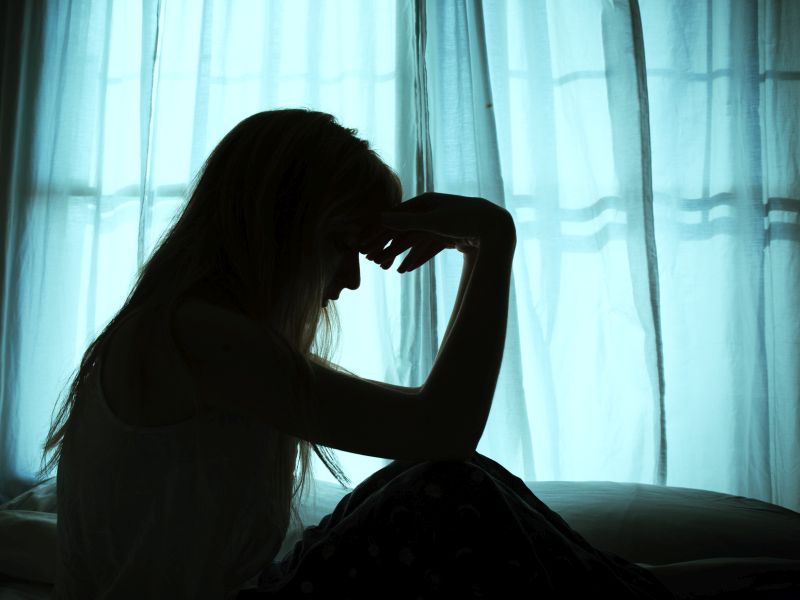Aspirin, Antihistamines: Kids Often Use OTC Drugs in Suicide Attempts
By Serena GordonHealthDay Reporter

MONDAY, Oct. 7, 2019 (HealthDay News) -- More teens are attempting suicide by overdosing on drugs, and new research suggests they are often turning to over-the-counter (OTC) medications like ibuprofen and aspirin in their efforts.
Antidepressants, antipsychotics and antihistamines were also common choices, the researchers added.
"What we were seeing was youth increasing suicide attempts using medications readily available in the home," said study author John Ackerman, suicide prevention coordinator at the Center for Suicide Prevention and Research at Nationwide Children's Hospital in Columbus, Ohio.
"People think that youth are thinking deeply about which medicine to take, but when someone is in crisis, it's what's in the medicine cabinet. These drugs are having very serious medical outcomes for young people," Ackerman added.
Girls were much more likely than boys to attempt suicide by what is known as "self-poisoning," and suicide attempts by self-poisoning in children and teens were higher in rural communities. These types of suicide attempts occurred more often during the school year, the study found.
When people survive a self-poisoning suicide attempt, they may have heart problems or seizures afterwards. Ackerman said that the drugs may have an impact on brain function as well.
"This paper is a call to action for parents to increase their safe storage practices and talk to kids about their mental health concerns," he added. "Ask your kids how they're doing."
Parents may think it's impossible to keep kids away from all medicines. "But, if you're adding barriers -- like a lock box or safe, and counting medication -- those seemingly simple tasks can help. They can be a bridge to a child or teen seeing other options," Ackerman explained.
From 2000 to 2018, more than 1.6 million young people between the ages of 10 and 25 attempted suicide by self-poisoning. The rates of these suicide attempts in young people aged 10 to 18 started to increase in 2011, the study found.
Almost one-quarter of those attempts resulted in a serious medical outcome. The drugs most used in these attempts were OTC pain relievers, antidepressants, antihistamines and antipsychotics. Opioids were only involved in 7% of cases with a serious medical outcome.
ADHD medications were more commonly used in the younger group -- 10- to 15-year-olds.
Less densely-populated states were more likely to have reported cases ending in serious medical outcomes.
"Rural communities are more at risk. It might be social isolation, lack of access to mental health care and economic factors," Ackerman suggested.
In kids 18 and younger, suicide attempts by self-poisoning occurred more during the school months of September through May. This pattern wasn't seen in the 19- to 21-year-old age group. The 22- to 25-year-old group had an increase in the summer months.
"Younger people seem to be more vulnerable during the school year," Ackerman said. Although the study didn't look at causes behind the findings, he said that school stress, peer behaviors, bullying and social media likely play a role.
Daniel Reidenberg, executive director of Suicide Awareness Voices of Education, reviewed the study and said, "In an acute suicidal crisis, people turn to the quickest, most easily available means."
He said there are usually signs before someone reaches a crisis level. "People might be struggling with sleep; their appetite might be off; they might talk about aches and have other complaints about physical problems. They don't want to go to school. They don't want to interact with their friends," Reidenberg said.
Of even greater concern is when someone talks about being a burden or says they have no hope for the future. They might start to look for ways to die or talk about suicide.
Reidenberg said a huge red flag is if someone just can't sleep for a few days. "Anxiety and agitation become worse as someone gets sicker. It's very, very important that anyone who might be at risk of suicide be monitored for sleep. It can be hard to notice disrupted sleep patterns in teens, but if there's one, two or three days without sleep, you need to have a conversation, and hopefully get some professional help."
Reidenberg added that connections are crucial: "The more connections that people have, the better off they are. A sense of aloneness increases the sense of distress and the risk of suicide."
If you find your child has attempted self-poisoning, Ackerman said it's important to get them to the ER immediately. The sooner they get help, the better the chances for a good outcome.
The findings were published Oct. 7 in Clinical Toxicology.
More information
If you or someone you know is in crisis, call the National Suicide Prevention Lifeline at 1-800-273-8255 or you can text HELLO to 741741 to get anonymous, free crisis counseling anytime. Learn more about the warning signs of suicide from SAVE (Suicide Awareness Voices Education).

The news stories provided in Health News and our Health-E News Newsletter are a service of the nationally syndicated HealthDay® news and information company. Stories refer to national trends and breaking health news, and are not necessarily indicative of or always supported by our facility and providers. This information is provided for informational and educational purposes only, and is not intended to be a substitute for medical advice, diagnosis, or treatment.

